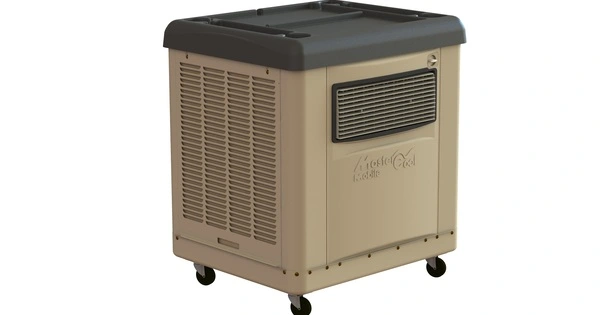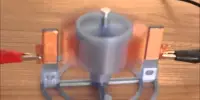An evaporative cooler, often called a swamp cooler, is a device that cools air by evaporating water. It is a gadget that cools the air by evaporating water. Evaporative cooling is distinct from other air conditioning systems, which employ vapor-compression or absorption refrigeration cycles. These coolers are both energy efficient and environmentally benign because they cool the air with water rather than refrigerants, like standard air conditioners do.
Evaporative cooling takes advantage of the fact that water absorbs a significant amount of heat in order to evaporate (it has a high enthalpy of vaporization). Dry air’s temperature can be dramatically reduced by the phase shift from liquid water to water vapor (evaporation). This can cool air with far less energy than refrigeration. In severely dry areas, evaporative cooling has the extra benefit of conditioning the air with more moisture for building occupant comfort. Here’s how they generally work:
- Basic Mechanism: The cooler consists of a fan and water-saturated pads or filters. The fan draws warm air through the wet pads or filters. As the air passes through these moistened pads, the water evaporates into the air.
- Evaporative Cooling Process: Evaporation is a cooling process; as water turns from liquid to vapor, it absorbs heat from the surrounding air. This causes the temperature of the air passing through the wet pads to decrease. The cooled air is then circulated into the living or working space.
- Control of Humidity: While these coolers add moisture to the air, they also help control humidity levels. However, in very humid climates, their effectiveness can be reduced since the air may already be saturated with moisture.
- Energy Efficiency: Evaporative coolers are generally more energy-efficient than traditional air conditioners, especially in arid regions where the air is dry. They consume less electricity because they don’t require a compressor or refrigerants.
- Suitability: Evaporative coolers work best in dry or arid climates where humidity levels are low. They may not be as effective in humid conditions since there is less room for evaporation to occur.
Limitations
Evaporative coolers may struggle to provide significant cooling in extremely hot and humid conditions. They are most effective in areas with low humidity. Overall, evaporative coolers are a cost-effective and environmentally friendly cooling option in the right climate conditions. They are commonly used in residential, commercial, and industrial settings, especially in regions with dry climates.
The cooling potential of evaporative cooling is determined by the wet-bulb depression, which is the difference between dry-bulb and wet-bulb temperatures. In arid conditions, evaporative cooling can minimize energy usage and overall conditioning equipment when compared to compressor-based cooling. In climates that are not classified as arid, indirect evaporative cooling can nevertheless be used to chill the air without raising humidity. Passive evaporative cooling solutions can provide the same benefits as mechanical evaporative cooling systems while eliminating the need for complex equipment and ducts.
















